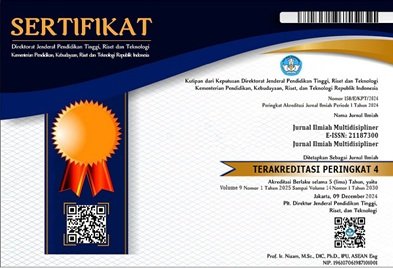PENERAPAN BEHAVIOUR BASED SAFETY DI BENGKEL REPAIR & MAINTENANCE PT DINAMIKA INTI PRATAMA
Kata Kunci:
Behavior Based Safety, Keselamatan Dan Kesehatan Kerja (K3), Perilaku Keselamatan, Bengkel Repair & MaintenanceAbstrak
Penelitian ini bertujuan menganalisis perilaku keselamatan kerja (K3) pada pekerja bengkel Repair & Maintenance PT Dinamika Inti Pratama di Samboja, Kaltim, dengan pendekatan Behavior Based Safety (BBS). Metode kualitatif deskriptif digunakan melalui observasi langsung dan wawancara purposive dengan pekerja lapangan, pengawas teknis, serta personel HSE. Fokus pengamatan meliputi penerapan SOP dan penggunaan APD, pola komunikasi kerja, dan tindakan pasca‑kecelakaan. Hasil menunjukkan bahwa pekerja secara umum menjalankan SOP dan menggunakan alat pelindung diri sesuai tugas helai, sepatu, kacamata, dan sarung tangan namun penggunaan pelindung telinga belum berbasis pengukuran kebisingan. Koordinasi kerja berlangsung informal dan efektif dalam mengidentifikasi potensi bahaya. Penanganan kecelakaan melibatkan pertolongan pertama serta pelaporan langsung, meski belum didukung sistem dokumentasi tertulis yang formal. Kesimpulannya, implementasi K3 cukup baik, namun perlu peningkatan pada pendokumentasian insiden dan basis data lingkungan kerja. Rekomendasi mencakup pelatihan berkelanjutan, pengawasan aktif manajemen, penegakan disiplin APD, dan penguatan sistem pelaporan serta dokumentasi. Diharapkan langkah-langkah tersebut akan memperkuat budaya keselamatan di bengkel dan meningkatkan efektivitas program BBS di perusahaan.
This study aims to analyze occupational safety behavior (OHS) in Repair & Maintenance workshop workers of PT Dinamika Inti Pratama in Samboja, East Kalimantan, using the Behavior Based Safety (BBS) approach. Descriptive qualitative methods were used through direct observation and purposive interviews with field workers, technical supervisors, and HSE personnel. The focus of observation included the application of SOPs and the use of PPE, work communication patterns, and post-accident actions. The results show that workers generally follow the SOPs and use personal protective equipment according to the task of strands, shoes, glasses, and gloves but the use of ear protection has not been based on noise measurement. Work coordination is informal and effective in identifying potential hazards. Accident handling involves first aid and immediate reporting, although not yet supported by a formal written documentation system. In conclusion, OHS implementation is good, but improvements are needed in incident documentation and the work environment database. Recommendations include continuous training, active management supervision, enforcement of PPE discipline, and strengthening reporting and documentation systems. It is expected that these measures will strengthen the safety culture in the workshop and improve the effectiveness of the BBS program in the company.





